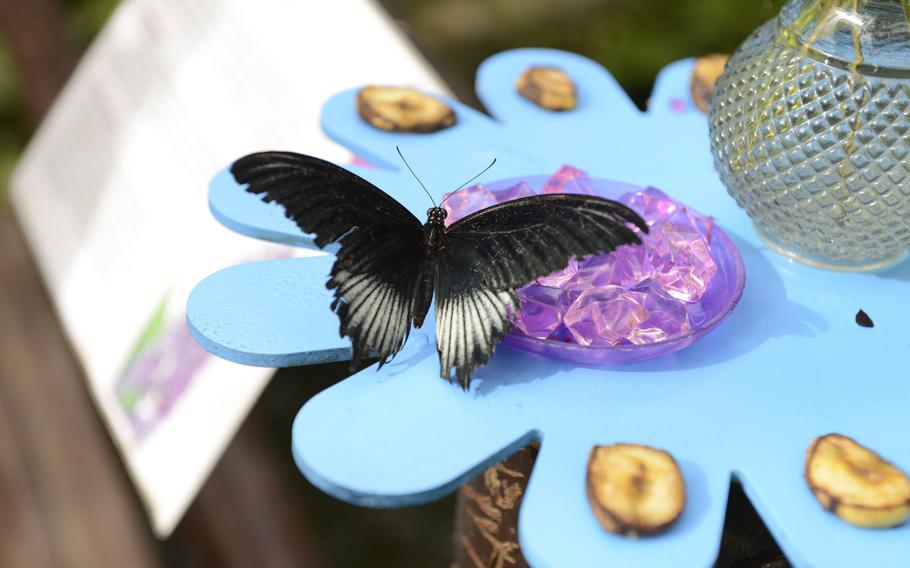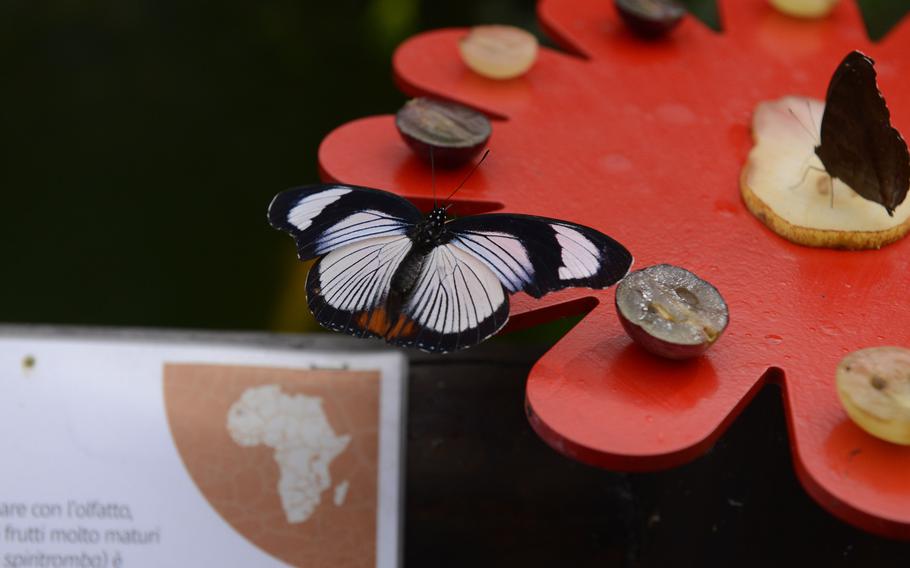
A butterfly dines on colorful food at the House of the Butterflies in Bordano, Italy. (Kent Harris/Stars and Stripes)
For a new perspective on a familiar place, it can help to bring along a kid or two during another visit.
That’s especially true of the Casa della Farfalle, or House of the Butterflies, in Bordano, Italy. My wife and I went there several years after its 2003 opening.
Hundreds of thousands of people from several countries have walked through the three greenhouse-like structures. Austria, Slovenia and Croatia are all just short drives away, and it’s not much farther from Aviano Air Base, where my two children attend school.
But while the two-legged visitors are somewhat diverse, the creatures housed at the facility are much more so. And many come from places well beyond Europe.
As the name implies, butterflies are the main attraction and they’re housed in three separate areas based on where they normally dwell: Africa, Asia and the Americas.
Don’t expect Disney-like surroundings. The areas are pleasantly filled with various plants for the butterflies and insects to climb or perch on. There are also a few pools for turtles, shelters for other insects or lizards and some glass containers for a few things the center doesn’t want roaming around — and neither do visitors.
An array of displays precedes the walk to the animal habitats. Some contain insects displayed in rows, similar to what one might see at a local museum or county fair, though they’re a bit more exotic in this case.
Other displays, in various languages including English, describe how butterflies live in their natural environments, and visitors are very likely to learn something.
Although the place can’t fully replicate the butterflies’ natural environment, opportunities to see a butterfly dining on a piece of fruit may be more prevalent than in their real habitats.

This butterfly, native to Africa, chows down on a slice of fruit at the House of the Butterflies in Bordano, Italy. (Kent Harris/Stars and Stripes)
And from the butterfly perspective, one can imagine those large, lumbering mammals that sometimes get a bit too close are better to deal with than a hungry bird or spider on the prowl.
On the QT
Hours: Daily, 10 a.m.-6 p.m. between March and October. This year, opening day is March 16.
Price: Admission to the greenhouses is 9.50 euros for adults, 7 euros for senior citizens and kids 4-10, free for kids 3 and under. It costs 12 euros, 11 euros, 10 euros and nothing, respectively, to see a few additional exhibits. Guided tours can be arranged in advance.
Food: There are few options in Bordano, but the choices increase along the SS-13. Udine is about 20 minutes south and boasts plenty of places for a meal.
Information: +39 344 234 5406; Online: bordanofarfalle.it; facebook.com/bordanofarfalle/?locale=it_IT